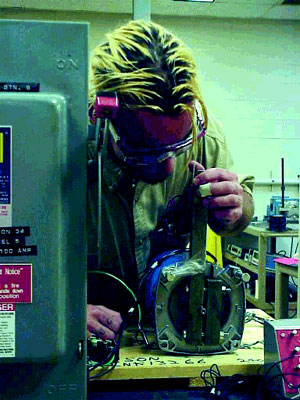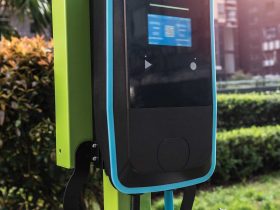During a visit to a new building site to inspect electrical equipment installations, an electrical inspector has the responsibility of advising the building manager that certain equipment may not comply with local codes. As a result, the building occupancy may be delayed until the matter is resolved.
The electrical inspector’s job can be made easier when the equipment bears the listing mark of a qualified certification organization, such as Underwriters Laboratories Incorporated (UL). The inspector can then assume that the equipment has been investigated for compliance with applicable safety requirements.
UL has several listing categories established for field-installed motors. Motors that comply with the requirements for these categories are authorized to be shipped from the manufacturer’s facility bearing the UL Listing mark. The intent of these listings is to facilitate selection and approval of the appropriate motor for the field application.
Background
UL has listed electric motors for hazardous locations for more than seventy-five years. In addition, UL has for many years investigated and certified motors as recognized components for use as factory-installed components in end-use equipment. The UL Recognition program provides for an evaluation of insulating materials, internal spacings, and other factors specific to the motor, in conjunction with UL’s Follow-Up Service at the motor manufacturer to verify continued compliance with the motor requirements. The UL Report for a Recognized Component motor specifies conditions of acceptability that must be met when the motor is installed in the end product. UL’s subsequent examination of a recognized component motor in the end product determines whether the motor operates within permitted temperature limits under intended loading conditions, live parts of the motor are suitably enclosed to minimize risk of electric shock, and the like.
The authority having jurisdiction (AHJ) has to bear the complete responsibility for determining the acceptability of an unlisted motor installed in the field. The AHJ has to determine whether the motor construction, performance, and safety provisions were acceptable for the application. This includes an evaluation of the field wiring provisions, physical protection of uninsulated live parts, electrical ratings, enclosure type, thermal protection and other factors to determine they were appropriate for the intended load, application and environment. The new UL Listing category for motors for ordinary locations includes an evaluation of these aspects and facilitates the AHJ’s job for field installation of this equipment.
UL Listed Fire Pump Motors

Figure 1. The motors covered by this category are intended for field installation in applications other than fire pump installations. Figure 1 shows an example of one of these motors.
The requirements for motors to be listed for fire pumps were first published in the 1996 edition of NFPA 20—Standard for the Installation of Stationary Pumps for Fire Protection. At the time the NFPA 20 revision was adopted, there were no listed fire pump motors available. A task force composed of installers, UL staff, and fire pump motor, controller, and pump manufacturers was formed to review the issues and develop a safety standard for fire pump motors. This task force developed proposed requirements that were published on April 30, 1997, as the UL Outline of Investigation for Fire Pump Motors, Subject 1004A. Shortly after the Outline was published, several manufacturers had their motors investigated and Listed to the new requirements. Subsequent work in this area resulted in the June 18, 2001, publication of the first edition of the Standard for Safety for Fire Pump Motors, UL 1004A.
UL Listed Motors for Ordinary Locations

Figure 2. Lab assistant prepares motor for a locked rotor test
AHJs continued to encourage UL to develop requirements for other motors for field installation. UL worked with interested parties to draft requirements, and in April 2001, UL established a new product category for motors (PRGY). The motors covered by this category are intended for field installation in applications other than fire pump installations. Figure 1 shows an example of one of these motors. These UL Listed motors, when installed in accordance with their installation instructions and used within their marked ratings and loading specifications, should require no further evaluation. Information on this new category may be obtained by accessing the UL online Certifications Directory atwww.ul.com/database.
The basic requirements used to investigate these motors are provided in the Outline of Investigation for Motors and Generators, Subject 1004B. This outline is used in conjunction with the Standard for Electric Motors, UL 1004. The Outline of Investigation and Standard provides detailed requirements for motor frames and enclosures, drain and ventilation openings, accessibility of live parts, corrosion protection, grounding, and other critical construction features. Safety performance tests are also specified, such as input tests to verify marked electrical ratings, normal temperature tests to determine if the motor is capable of operating at rated load without exceeding the temperature limits of the insulation system, dielectric voltage-withstand tests to evaluate the insulation system, and an evaluation of the inherent motor-protector combination (if provided).
AHJs will need to review the protection provided for the motor in accordance with NEC Article 430, Part III. Motors may be provided with a thermal protector installed directly on the motor to disconnect the power if the motor is overloaded or the rotor locked. These protectors may be found in motors rated up to 15 Hp. Such motors are marked “Thermally Protected.” If a thermal protector is not provided, the inspector will need to verify that appropriate equipment, such as a motor overload relay, is provided.
UL Listed motors for ordinary locations are marked with the UL symbol in a circle, the word “Listed” and either “Fire Pump Motor” or “Motor,” along with an alphanumeric control number. They are also marked with the company name, model number, electrical ratings, and enclosure type designation, as referenced in NEC Table 430.91 (e.g. 3, 3R, 12 K and raintight, rainproof, driptight, dust-tight, and so forth). If no enclosure type designation is marked on the motor, it should be considered suitable for Type 1 applications only. Motors investigated for direct connection to a building wiring system are marked “Acceptable for Field Wiring.” Motors intended only to be used as a component in end-use equipment do not include this marking.
It will be easy to tell the difference between UL Listed motors and UL Recognized Component motors for use in other equipment. A motor covered under UL’s Component Recognition program is normally identified only by its model number and company name. It may also be provided with the Recognized Component Mark .
Summary
Inspecting motor installations can be a challenging task, partly because listed motors for ordinary locations have not been available.
The availability of UL Listed fire pump motors and Listed motors for other applications should make it easier for designers, AHJs and others to provide safe, code-complying installations without having the AHJ evaluate the basic construction and performance of unlisted motors. AHJs may expect to begin finding the UL Listing Mark on motors, and in such instances, focus on verifying that the motor is installed in accordance with the instruction manual requirements and determining whether it is being used in accordance with its electrical and environment ratings.
For more information on UL Listed motors, please contact Bruce Bohren at Bruce.G.Bohren@us.ul.com.













Find Us on Socials